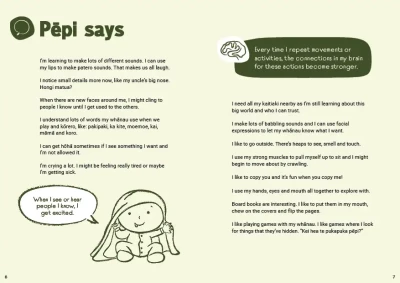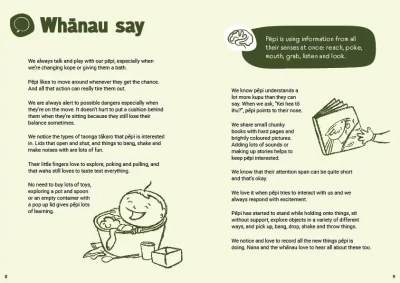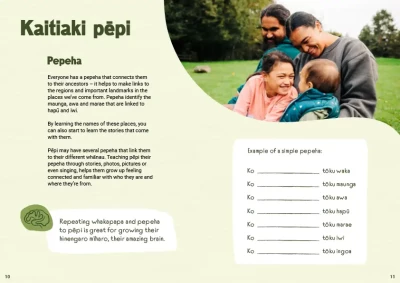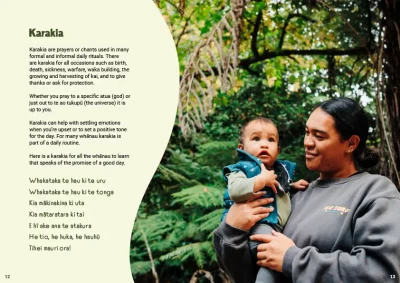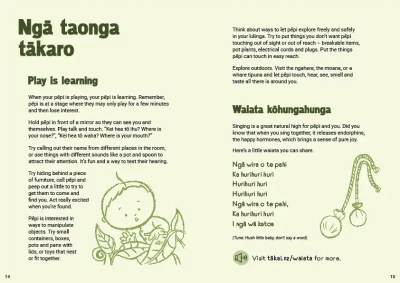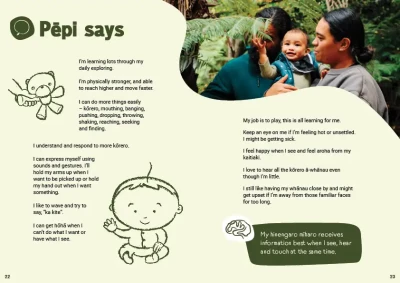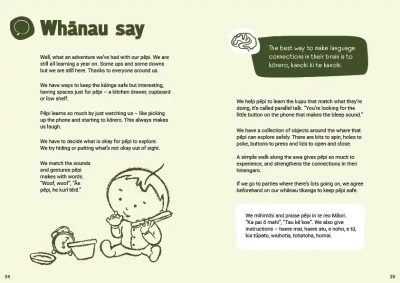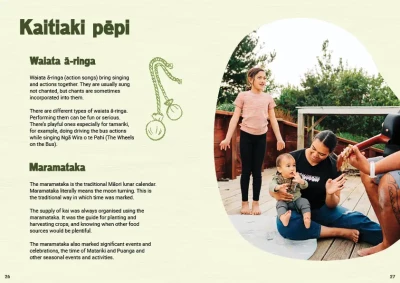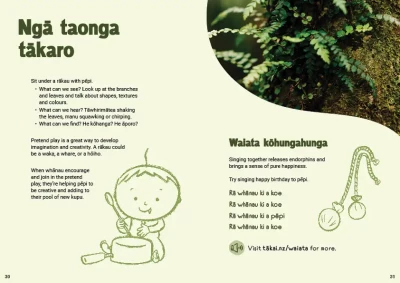
Introducing the Whakatipu Te Pihinga 2 booklet
Whakatipu booklet Te Pihinga 2 has ideas and activities around playing with babies, incorporating daily routines into play, and the value of pepeha.
Overview of the Whakatipu booklets
If you’ve not already introduced the booklets, explain that they’ve been written especially for all families, from a te ao Māori perspective.
There are 8 booklets in the series covering all the stages of a baby’s development from pregnancy up until 5 years old.
The following information will help you introduce the Whakatipu booklet Te Pihinga 2 to whānau.
Te Pihinga booklet 2
This is the second booklet in the Te Pihinga section and covers 7 to 12 months. Each booklet has the same sections, but the information differs as it relates to the specific age range.
‘Te Pihinga’ means ‘the sprout’, representing the baby who has emerged from ‘te kākano’, the seed.
Each booklet starts with a different whakataukī . This booklet has:
He iti tangata, e tipu. He iti toki, he iti tonu iho.
Ask the whānau:
- What do you think the message is in this whakataukī?
- Could this message be about the potential of a young child to grow, develop and change?
- Or might it suggest that the adze, although small, could fell the largest tree by chipping away at it, suggesting that it may take some time and effort to work away at your goals?
Te Pihinga 2 has 2 chapters, each covering a 3-month period. Each chapter starts with 'Pēpi says’. These few sentences give us an idea about the baby's stage of development. Pēpi is telling their whānau about some of the things that are happening during this age.
Pēpi says
Read through ‘Pēpi says’ together on pages 6–7 and 22–23. One of the important messages to parents is, ‘I like playing games with my whānau.’
Ask:
- What can you remember about play from your own childhood?
Memories with high emotion attached to them often come back to us more easily. They can be positive or negative emotions – happy, sad, jealous or frightened.
Ask:
- How far back can you remember?
- Can you remember how you felt?
- Can you remember any play experiences that your parents joined in with?
- What were they?
- Do you find it easy to play with your kids?
- Why do you think that is?
Whānau say
The sections called ‘Whānau say’ talk about some of the things parents might be feeling, thinking or experiencing at this time (pages 8–9 and 24–25).
Here whānau share their thoughts on the value of play and how to turn daily routines into playful experiences.
Ask:
- What have you been thinking about recently – any of these same things?
- What makes baby smile and laugh with you?
- What are some of the fun things you and baby spend time together doing?
- How does your baby let you know they want to play?
- What have they been interested in playing or exploring recently?
- Has that been okay with you?
- What do you do when it’s not okay?
- What do you say?
A lot of the games we play with babies are about the fun we’re having. And the more we do it, the stronger our relationships become. Sometimes it’s just talking or singing in a funny voice that works.
Kaitiaki pēpi
‘Kaitiaki pēpi’ sections look at some traditional practices around parenting and whānau (pages 10–11 and 26). Te Pihinga 2 has ideas to help baby learn about who they are and where they’ve come from through their pepeha .
- Do you have a pepeha for your pēpi?
There’s also information on the place karakia has in whānau (page 12).
- Are karakia part of your family’s practices or routines?
Invite whānau to look for the brain development icons scattered throughout the booklet. They describe what's happening for pēpi in their hinengaro mīharo (amazing brain) and how whānau make a difference in that development.
Other sections of the chapter include activities and pakiwaitara , and there’s a waiata in every chapter too (pages 15 and 31). Whānau can listen to many of them on the Tākai website.
'Ngā taonga tākaro ' sections (pages 14–15, 30–31) have simple play ideas for parents to enjoy connecting with their pēpi and strengthening their relationship with each other.
- Shall we try one now?
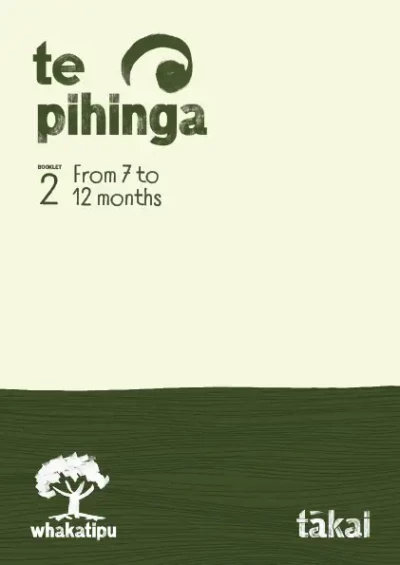 pdf 12 MB
pdf 12 MB
